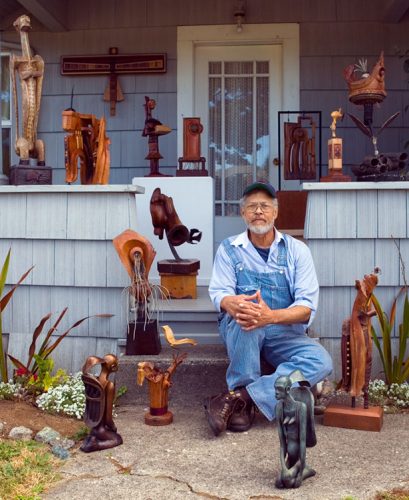
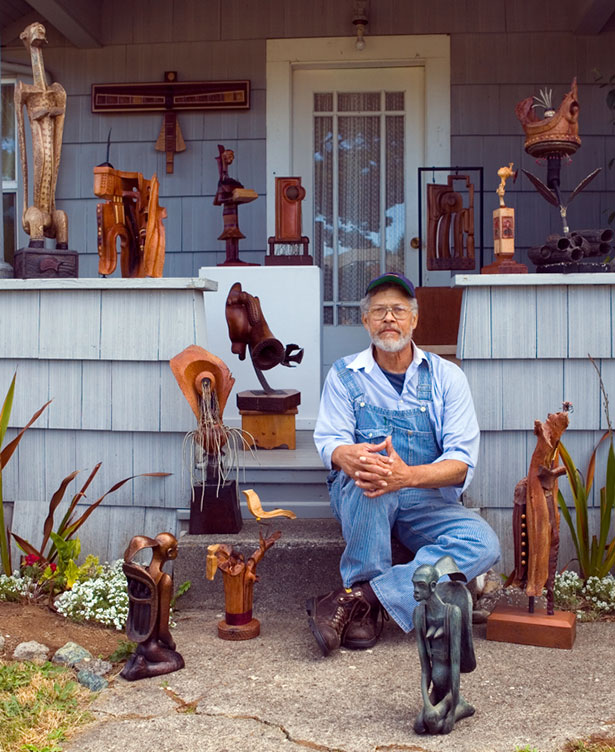 |
| Charles Tatum with his sculptures |
Maude Kerns Art Center is in the thick of a retrospective on the work of Charles H. Tatum, the masterful and prolific Mississippi-born, Oregon-based sculptor in wood and bronze whose work marked the link between modern art (think Matisse and Picasso) and its African roots. Patricia Soltys, Tatum’s longtime partner and patron, named the retrospective African Roots for that reason. The two met in 1975 and eventually lived together in Bandon.
“Charles Tatum and I had a long and complex and very interesting relationship,” she says. “A lot of people look at us as a couple. In some aspects we were, in others, certainly not.” Through the Mississippi Pharaoh Project, Soltys is the personal representative for the estate of Tatum, who passed in 2008.
Eugene will get rare and intimate insight into Tatum’s art and life when Soltys gives an exhibit talk 6:30 pm Thursday, April 30, at Maude Kerns. The exhibit runs through May 15.
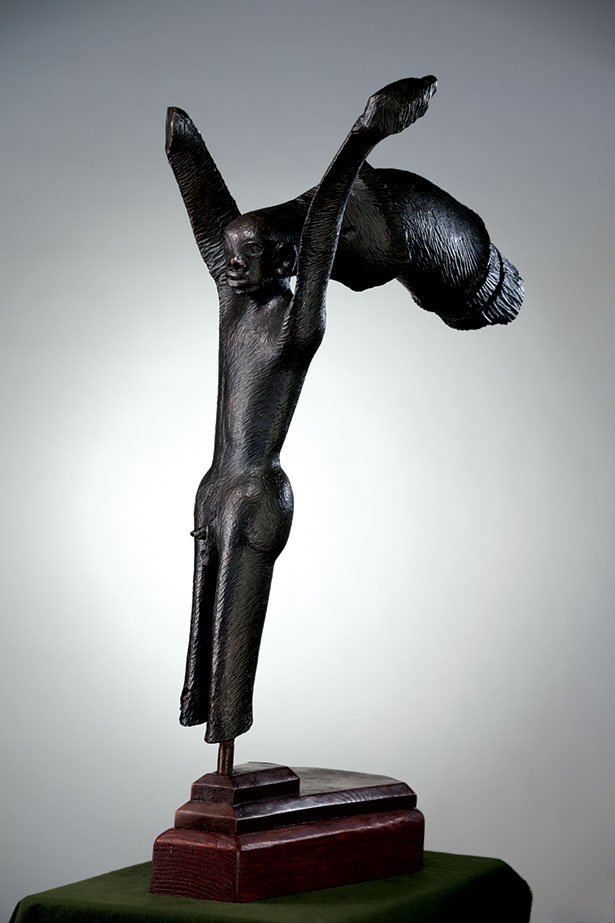 |
| ‘Ascension’ of ‘The Middle Passage’ series |
“They were really trying to make the point that modern art has deep African roots,” Soltys tells EW over the phone from Bandon, referring to the circle of prominent African-American artists Tatum worked alongside in the ’70s — John Outterbridge, Judson Powell, Charles Dickson, Noah Purifoy — at the Watts Towers Art Center in L.A. Tatum also became known for his work on the 1977 Albina Mural Project in Portland as well as for “The Watchers ” and “The Middle Passage” series, the latter of which depicted “the story of Africans who were brought to America in the 1600s as chattel” in four powerful figurative pieces.
The Albina Mural Project, which consisted of painted and sculpted murals, was removed in the 1980s, but Soltys says, Tatum kept his panel, dividing it into six separate panels. One, called “Brotherhood,” hangs in the Bonneville Power Administration Building in Portland. Soltys says one more panel, “Affirmation One,” hangs in the office of the owner of The Skanner, an African-American newspaper based in Portland.
“The rest of it, Charles had down here in Bandon,” she says. “At the time of his death, he was busy cutting it up turning it into a destroyer ship.” She notes that this was an example of assemblage — a sort of 3D collage that uses found objects — one of his preferred working methods rooted in his years in L.A. following his time in the Navy and the 1965 Watts riots. These race riots resulted from high unemployment of African Americans after World War II and racist housing policies, placing African Americans in areas where there were few job opportunities.
 |
| Charles Tatum and Patricia Soltys |
“After the Watts riots, they had all this trashed material around,” Soltys says. “A lot of the assemblage of Southern California came from that.”
The artist moved to Portland in the mid-’70s after traveling up and down the West Coast because “L.A. made him crazy,” she says. “He found a community he felt he could work in.”
Tatum worked up until 2008, when he passed from a battle with bladder cancer. Soltys notes that they spent the last year of his life talking about his art extensively. “I accumulated as much knowledge about the work that I could,” she says. The work on view is Soltys’ entire collection, which is the majority of Tatum’s oeuvre.
“The pieces he mostly valued, generally speaking, ended up somewhere where I was,” she says.
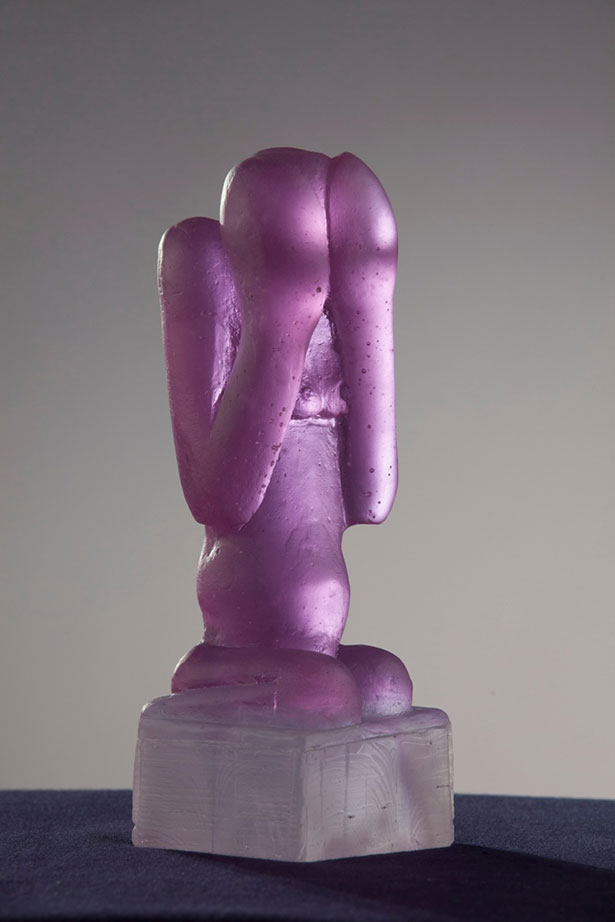 |
| ‘Overwhelmed’ |
Soltys says Tatum always wanted to see his works in bronze and crystal, and had molds made of his sculpture, but did not find a glass pourer before his death. He was particularly keen, she adds, on seeing “The Middle Passage” series in bronze because the original wood pieces were falling apart. After his 2008 passing, Soltys worked with Dutch Schulze, a glass artist in Bandon, in what she calls a “posthumous collaboration,” pouring lead crystal into Tatum’s molds as well.
“Charles never saw his work in crystal. He always wanted to,” she says. The crystal molds are now on view at Maude Kerns.
Soltys is determined to share Tatum’s work more widely, but she’s still unsure how. “I would love to be able to get it in an academic circuit,” she says. “I would love to see it tour around college and universities.”
And as for Tatum and Soltys?
“I fell in love with the art and learned to put up with the man,” she adds, laughing. “I was happiest when I could hear him out in the shop making sculpting noises. It was music to my ears.” For more information, visit charlestatumsculpture.com.
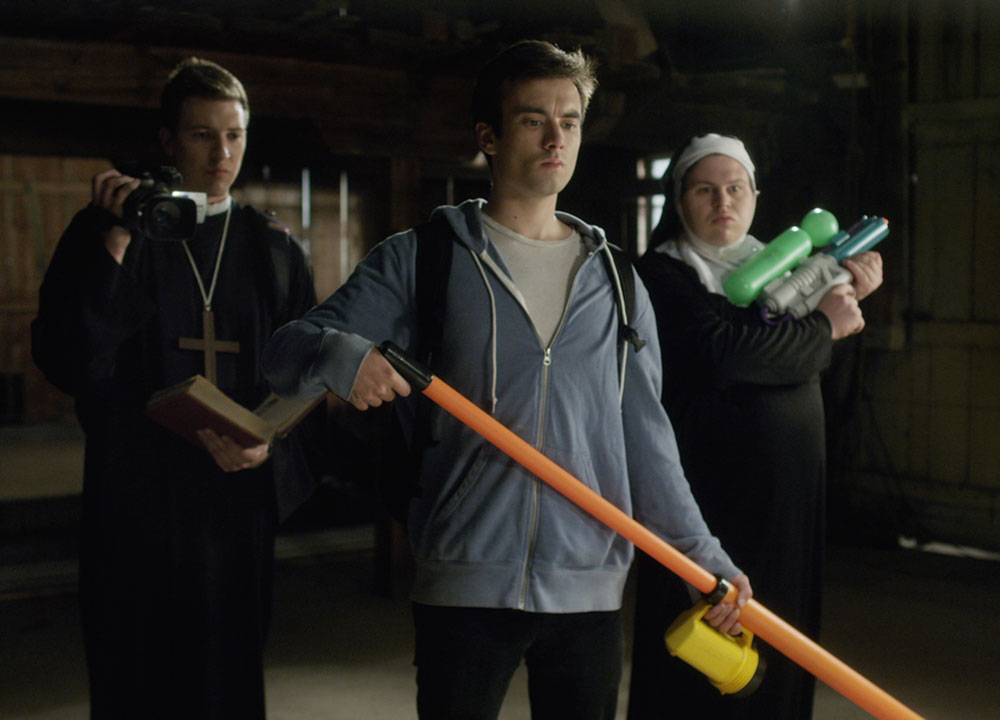 |
| Bad Exorcist |
The multifaceted, multicultural, multinational film festival Cinema Pacific kicks off 6:30 pm Monday, April 27, in the renovated UO Straub Hall Auditorium with a screening of new feature film Bad Exorcists, followed by the premiere of films from the wildly popular Adrenaline Film Project, in which students and seasoned film industry professionals team up to write, shoot and edit a film in 72 hours. “One big component of it is that we’re actually cultivating talent of Oregon filmmakers through the Adrenaline Film Project,” Cinema Pacific director Richard Herskowitz says. In fact, he adds, Bad Exorcists was made by a group of alum from the AFP’s first year. “It’s a real homecoming,” he says. The festival runs through May 3 in various locations. Read more with Herskowitz in EW’s April 30 issue.